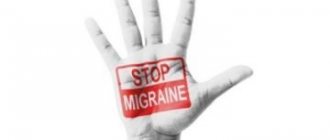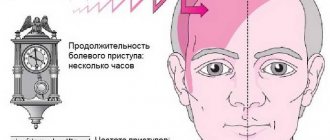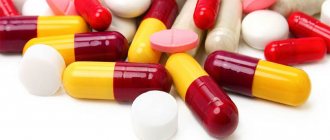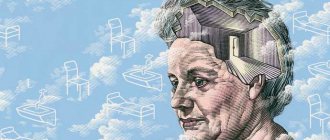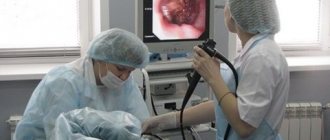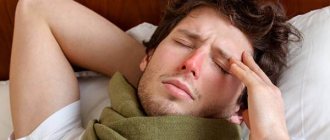Choosing a drug for migraine
Migraine medications are classified into components: for the relief of an emerging migraine attack and for the prevention of paroxysms of the disease. The strength of the pain symptom during migraine paroxysm varies from weak to very strong. The frequency of paroxysms influences the choice of an adequate drug. The patient may have one episode per month, or may have migraine attacks daily. Therefore, drugs for the treatment of migraine should influence both the severity of a painful attack and the frequency of their occurrence.
- Medicines for relieving mild pain and stopping rare migraine attacks at the beginning of their development.
This migraine remedy is relevant and effective when the disease attacks only a few times a month. There is no addiction to such tablets. Simple analgesics and anti-inflammatory drugs can be used. The main condition for their appointment is timely administration. The maximum effect develops if the patient manages to use them at the very beginning of an attack from the first signs of migraine, when only its precursors appear.
Representatives of this group are the following drugs:
- Aspirin;
- Paracetamol;
- Naproxen;
- Ibuprofen;
- Diclofenac potassium.
- Relief medications for frequently occurring intense pain, as well as in cases where the analgesic is ineffective.
After a year, many patients notice that their usual analgesic stops working. This manifests itself in insufficient analgesic effect. They have to increase the single dosage or increase the frequency of taking the tablets. The total dose begins to exceed the maximum permissible. The doctor must analyze the reasons for the resistance that has arisen. Only a competent analysis of the situation will allow us to find the correct solution to the problem.
Reasons leading to a decrease in the effectiveness of a remedy for relieving a migraine attack:
- The emergence of addiction to painkillers for migraines;
- Progression of the disease;
- Addition of concomitant pathology (for example, another type of headache);
- Atypical reaction of cerebral vessels to vasodilating vasodilators;
- Taking unreasonably large dosages of drugs.
The solution to the problem of resistance is to take combination medications during migraine attacks. What pills help with this:
- Citramon P;
- Askofen;
- Solpadeine;
- Sedalgin-Neo;
- Migrenol Extra.
If the drug contains several active ingredients, there will be more side effects than a tablet with one active ingredient.
- Tablets for the relief of very severe migraine pain.
Interesting: Basilar migraine: causes, symptoms, treatment and prevention
To relieve cephalgia, only anti-migraine medication tablets, which serve as the basis of therapy, will help. Migraine relief comes from two groups of drugs: triptans (called triptans for short) and ergot derivatives.
The group of triptans includes:
- Sumatriptan;
- Derivatives of sumatirptan (imigren, amigrenin, sumamigren, trimigren);
- Zolmitriptan (zomig);
- Eletriptan (Relpax).
Ergot derivatives are also known as ergotamine derivatives. They relieve very severe migraine pain. These include:
- Ergotamine;
- Dihydroergotamine;
- Caffeamine;
- Nomigren.
Best for different groups of people
For children
Migraine in children and adolescents is more dangerous than in adults , because during the development of the body, the symptoms of the disease, the frequency of its manifestations and the severity of the headache can increase significantly, which is why the headache can take a chronic form.
There are a number of medications that are commonly prescribed to children when starting treatment for migraines. They relieve pain and relieve other symptoms, if any. The best ones are as follows.
- Prednisolone . It is used in case of headache that does not go away for a long time. The drug has an analgesic and anti-inflammatory effect. Contraindications: cannot be used for severe infectious diseases, upper respiratory tract diseases, gastritis and other stomach diseases.
- Dihydergoth . Prescribed for children over 12 years of age. Has a calming and analgesic effect. Contraindications are as follows: angina pectoris, shock, liver disease, individual intolerance to the components of the drug.
- Imigran . Tablets or a spray can be prescribed to a child at the very beginning of headache treatment. The drug relieves severe pain, relieves or eliminates the symptoms of migraine with aura. Contraindications are minimal: stroke, intolerance to the components of the drug, vascular and heart diseases.
Expert opinion
Zemlyanukhina Tatyana Vyacheslavovna
Ambulance and emergency paramedic at the Clinical Emergency Hospital #7 in Volgograd.
Ask an expert
When choosing a drug for a child, pay attention to the composition; it should not include acetylsalicylic acid. Its presence can lead to the development of Reye's syndrome against the background of a viral infection, which manifests itself as acute liver failure: thinking disorder, loss of strength, profuse vomiting.
Children who have migraines should not take the following medications::
- Ergotamine.
- Sumatriptan.
These medications should only be prescribed by a doctor if the risk of serious side effects is minimal. In other cases of taking these drugs, the migraine may worsen, additional symptoms will appear, and the patient may become critically ill.
For adults
In adults, migraines occur quite often , probably due to constant stress and anxiety. Therefore, it is necessary to know which medications can help relieve pain quickly.
- Askofen-P . Contains the active substances paracetamol, acetylsalicylic acid and caffeine. This drug relieves headaches and inflammation, improves the condition of blood vessels in the brain. Contraindications for use are as follows: stomach ulcer, duodenal ulcer, asthma (any type), pregnancy and lactation, hemophilia, liver failure, hypertension.
Solpadeine . Paracetamol and caffeine are also active ingredients. The tablets relieve headaches, inflammation and other symptoms of migraine. Contraindications: glaucoma, pregnancy and lactation, blood diseases, high blood pressure.- Pentalgin . The active ingredients are paracetamol, naproxen and caffeine. This medicine not only relieves headaches, but also has a calming effect. In addition, vascular tone improves, nausea and intracranial pressure disappear. Contraindications: peptic ulcers of the stomach and intestines, bleeding, hypertension, lactation and pregnancy, heart failure, arrhythmia, liver and kidney diseases.
Adult patients are not recommended to take drugs such as:
- Aspirin . Such a familiar medicine can be prescribed by a doctor if the patient’s blood condition allows it. If the blood is not very thick, it is better to refrain from taking the drug.
- Diclofenac . This common remedy helps fight headaches well. But, as studies have shown, this drug most often causes allergic reactions in people, which leads to a critical condition.
What pills can you take during pregnancy?
Most carefully you need to understand exactly those medications that are suitable for pregnant women. Indeed, in this situation, not only the life of the woman, but also the life of the child depends on the medications taken.
The most popular and fastest-acting drugs for migraines:
- Citramon . The dosage of the drug and the possibility of complications should be checked with the attending physician. By taking the tablets with caution, in small doses, you can get rid of headaches quite quickly. Contraindications: ulcerative colitis, liver and kidney diseases, cardiovascular system.
- Paracetamol . If Citramon does not help, there is no need to increase the dose taken - you should change the tablets. Paracetamol contains a different dose of the active substance. In this case, you should also be careful with taking pills, because they have a number of contraindications: heart and vascular diseases, stomach diseases, individual intolerance to the components.
- Acetaminophen . The drug is available only with a doctor's prescription. It can be taken both in early and late stages of pregnancy. Contraindications: diseases of the intestines and stomach, stroke, heart attack.
Speaking about drugs prohibited during pregnancy, it is impossible to single out several of them.
While carrying a child, doctors do not recommend taking medications - they should be replaced with vitamins or safe traditional medicine.
To summarize, we will inform you about the importance of keeping a person suffering from migraine under the supervision of a doctor - it is necessary to undergo diagnostics on the advice of a specialist , and consult with him about taking certain pills for migraines. Be careful about your health!
Migraine blockers for daily use
The main postulate of the prophylactic prescription of a medication is to prevent the occurrence of severe headaches. To prevent their occurrence, you can take tablets from the following groups:
- β-receptor blockers (atenolol);
- ά-receptor blockers (dihydroergocryptine);
- Ca channel blockers (verapamil, nimodipine, flunarizine);
- Antidepressants:
- Amitriptyline;
- Fluoxetine;
- Venlafaxine.
- NSAIDs (nurofen);
- Anticonvulsates (lamotrigine);
- Ergot alkaloid derivatives (ergotamine).
For the purpose of prevention, the products are used for several weeks.
What kind of disease is this?
This is an attack of increased intensity headache. Half of the head hurts, the temporal, ocular and frontal areas are often affected. The person feels nauseous, vomits, and has a negative reaction to bright lights and loud sounds. The disease is hereditary - if the parents are prone to migraines, then the child will also suffer from 60-90% of them.
The mechanism of development of the disease has not been fully studied; socially active people are more likely to get sick.
ATTENTION: if a person has high ambitions and increased anxiety, then he is at risk.
Analgesics
| Pills | Mechanism of action | Description |
| Analgin | Analgesic-antipyretic. | The active ingredient of analgin is metamizole sodium. The indication for use is pain of various origins, therefore it is used for migraine attacks. |
| Paracetamol | NSAIDs. The mechanism is associated with inhibition of the enzyme necessary for the formation of prostaglandins. | Paracetamol is prescribed for mild to moderate migraine pain syndrome. Experienced patients do not like it because it is ineffective. Advantage – use during gestation and breastfeeding. |
| Ibuprofen | NSAIDs. The mechanism is associated with inhibition of the enzyme necessary for the formation of prostaglandins. | Prescribed for mild to moderate pain, acts as a pill for migraines. Advantage – use during gestation and breastfeeding. |
| Aspirin | NSAIDs. The mechanism is associated with inhibition of the enzyme necessary for the formation of prostaglandins. | Prescribed for mild to moderate migraine pain syndrome. It has a toxic effect on stomach cells and is not suitable for systematic use. |
| Naproxen | NSAIDs. The mechanism is associated with inhibition of the enzyme necessary for the formation of prostaglandins. | Prescribed for mild to moderate migraine pain syndrome. Use with caution during pregnancy and lactation. Has a small number of side effects. Cannot be used by children under 1 year of age. |
| Pentalgin N | A combined drug, an antispasmodic analgesic with an anti-inflammatory effect. Pentalgin N contains molecules of paracetamol, naproxen, caffeine, drotaverine hydrochloride, pheniramine maleate. | The combination of five components allows it to be used for migraine pain of moderate intensity. The positive effect is achieved due to the caffeine content in the tablet. Absolutely contraindicated for pregnant and lactating women. |
Types of migraines in women
Migraine can be simple or with aura, which is a complex of neurological disorders. In more than 70% of cases, women suffer from the usual form of the disease. Aura is divided into several types:
- Ophthalmic aura is characterized by the formation of flickering flashes and dots before the eyes.
- With the retinal form, the woman temporarily sees nothing or distinguishes images very poorly.
- With the onset of an ophthalmoplegic aura, the eyelid droops, the person experiences problems with eye movement, and the picture appears double.
- The speech form is characterized by difficulties with speaking and understanding speech.
- With a vestibular aura, the head begins to feel very dizzy and coordination of movements is impaired.
- The panic form is manifested by tachycardia, anxiety and panic attacks.
- The sensitive type is characterized by numbness, goosebumps, burning, tingling, first in the fingers, then in the arm or leg, on the tongue and one part of the face.
Aura symptoms help a woman understand that a migraine attack is approaching, which can be partially blocked by taking medications. But pain does not always occur; in this case, it is called a migraine aura. Women also experience migraines during pregnancy and menstruation.
Migraine during pregnancy
Migraines during pregnancy can be triggered by hormonal changes, high renal load and increased blood volume, which affect the cardiovascular system.
Important information
Seizures have a negative impact on the child; lack of oxygen, fluid and exhaustion due to vomiting can cause miscarriage and developmental arrest.
Migraine is mainly observed in the first trimester, but cases of late manifestation cannot be excluded due to insufficient blood supply and high loads on the spine. During this period, treatment for migraine in women should be special so that it does not affect the fetus.
Menstrual migraine
Migraine before the onset of menstruation is not considered a pathological condition, but the symptoms also indicate some hormonal disorders. Basically, the pain comes 2 days before bleeding and continues for the same amount of time after the start of menstruation, but it can begin during and a few days after menstruation. Cephalgia during menstruation can be supplemented by:
- abdominal pain;
- swelling and tenderness of the breast;
- aching in the lower back;
- intestinal disorders.
According to medical statistics, in most cases, girls present with signs of menstrual migraine during the formation of their cycle due to high testosterone levels. In older age, the reasons are fluctuations in estrogen and progesterone, as well as the body’s sensitivity to egg breakdown. Urgent treatment of migraine in women is required in cases of repeated vomiting, heavy bleeding, and tachycardia.
Antispasmodics, indications and restrictions on use
Against migraines, you can take tablets that have an antispasmodic effect. No-spa and spasmalgon are effective remedies.
Interesting: Causes, symptoms and treatment of chronic migraine
| Pills | Mechanism of action | Characteristic |
| No-shpa | Non-selective myotropic drug affecting smooth muscle cells, phosphodiesterase inhibitor. | Pure antispasmodic. Effective for migraines, tension cephalgia. |
| Spasmalgon | A combined antispasmodic and analgesic drug consisting of pitofenone, metamizole sodium, fenpiverinium bromide. | The antispasmodic effect is carried out due to the direct myotropic effect and the M-anticholinergic effect. A number of doctors question the advisability of taking this pill for migraines and headaches. |
Antispasmodics have certain restrictions on their use due to their systemic action:
- Inhibition of hematopoiesis in the bone marrow;
- Diseases of the heart muscle and blood vessels (various types of angina, heart failure, tachyarrhythmias);
- Granulocyte deficiency;
- Cirrhosis of the liver;
- Glomerulonephritis with PN.
The need for migraine prevention
Migraine is an unpleasant phenomenon that creates serious discomfort for its owner. The pain can be so severe that the patient cannot lead his usual lifestyle: work, study, attend events. For this reason, migraine must be treated, and in some cases prevented.
First of all, preventive measures are necessary for people who have at least once experienced a migraine attack. In this case, the doctor gives recommendations that can reduce the likelihood of relapse of the disease. This type of prevention is called secondary.
The primary type is aimed at preventing the occurrence of migraine in people who have never experienced attacks, but are at increased risk for them. This group may include:
- Children who have a hereditary predisposition. For example, if both parents periodically suffer from migraines, then their child is likely to encounter a similar problem;
- Children with a number of neurological disorders, for example, those who suffered from hypoxia during intrauterine development;
- Persons with hormonal imbalances;
- Persons who are often under stress. Most often this is due to a large amount of work and high responsibility;
- Persons who frequently interact with bright light sources, flashes, and monitor screens. This may also be due to the nature of the work;
- Teenagers during puberty;
- Persons with disrupted daily routines and chronic lack of sleep;
- Persons who do not tolerate the acclimatization process well.
In addition, it is worth remembering that the likelihood of migraines increases with prolonged inflammatory processes, allergic reactions, and nervous exhaustion.
Antidepressants
In the 20th century, the concept of psychosomatic disease with disruption of the functioning of the central nervous system appeared in medicine. A manifestation of its violation is the pathology of any other organ. A striking example is the occurrence of hemicrania against the background of depression. Sadness, apathy, and adynamia provoke pain in the head. For such patients, antidepressants are the ideal medications to treat migraines.
List of effective antidepressants for the psychosomatic form of the disease:
- Monoamine oxidase reuptake inhibitors;
- Tricyclics (amitriptyline);
- Selective serotonin reuptake blockers (floxet, paxil);
- Selective serotonin and adrenaline reuptake blockers (Velaxin, duloxetine)
Amitriptyline. The most famous pill for relieving symptoms of depression. It relieves apathy, tearfulness, and mood swings. To achieve the greatest effectiveness of therapy, a combination of two tablets is proposed: an antidepressant and an adrenoblocker (amitriptyline and atenolol).
Traditional recipes for migraine prevention
Despite the fact that the effectiveness of drugs in the prevention of migraines has been scientifically proven, many patients prefer not to immediately seek their help, but to solve the problem in a more gentle way. For this, various methods of alternative medicine are used, which in some cases can indeed provide good results.
Prevention of migraine with folk remedies can also be carried out as an addition to the main drug therapy. These methods boil down to using:
- Strong tea or coffee. Everyone knows that these two drinks can relieve headaches by increasing blood pressure and having a tonic effect;
- Valerian. Its crushed root is brewed with boiling water, after which 1 tablespoon is taken every day;
- Melissa. The herb is brewed in boiling water and taken 3 tablespoons daily;
- Black currant. A quarter glass of this berry juice is taken 3 times a day to prevent headaches.
In fact, the list of folk methods for migraine prevention is quite extensive, but it is worth understanding that the effect from them is not guaranteed, and if attacks occur more often and there is a risk of complications, then it is imperative to use medications.
Medicines containing caffeine
Fast-acting medications for hemicrania include tablets that contain the bioactive substance caffeine.
| Pills | Compound | Note |
| Migrenol extra | Acetylsalicylic acid, caffeine, paracetamol | Indicated for use as an analgesic for headaches and migraines. It begins to quickly have a therapeutic effect within ½ hour after administration. The tablet contains the maximum content of paracetamol compared to other caffeine-containing drugs. |
| Citramon P | Acetylsalicylic acid, caffeine, paracetamol | It differs from migrenol extra in a lower dosage of active ingredients. Citramon P will help get rid of migraines only in case of mild pain attacks. |
| Excedrin | Acetylsalicylic acid, caffeine, paracetamol | It contains equal amounts of acetylsalicylic acid and paracetamol. |
| Askofen | Acetylsalicylic acid, caffeine, paracetamol | It contains equal amounts of acetylsalicylic acid and paracetamol. |
In terms of speed of onset of effect and strength of pain relief, fast-acting caffeine tablets can be presented as follows (from least effective to most effective):
- Citramon P;
- Askofen;
- Excedrin;
- Migrenol extra.
The main task of prevention
Prevention of migraine attacks should be selected as carefully as the treatment itself. First of all, preventive actions should be aimed at identifying the factors that provoke the disease. Only by identifying them and eliminating them from the patient’s life can one hope for a good result of the measures taken.
So, for example, if a headache is caused by eating foods high in tyramine, then until the patient reduces their consumption, treatment will not have the desired effect.
To prevent migraine, the doctor must develop a set of medications or procedures that can provide:
- Reducing the frequency of attacks and their duration;
- Relieving the nature of attacks;
- Increasing the effectiveness of treatment;
- Minimizing the risk of severe consequences and disability;
- Improving the general condition of the patient.
Thus, prevention should not be carried out unilaterally, preventing attacks, but comprehensively, ensuring the overall health of the body.
Triptans for migraines
Migraine medications, represented by medications of the triptan group, are classified by neurologists as specific therapy. They can only be prescribed by specialists after the diagnosis has been clarified. Their use cannot be recommended for patients with common cephalalgia. Their main task is to relieve pain in a patient with a severe form of the disease, for example, migraine with aura.
Interesting: Is it possible to drink coffee when you have a migraine?
Pros and cons of triptans
| pros | Minuses |
| Specific therapy for migraine. | Prohibition of frequent use (not suitable for daily therapy) |
| Direct effect on serotonin concentration. | It is necessary to take into account that they are not allowed during pregnancy and lactation. |
| Pronounced effectiveness of therapy. | Cannot be combined with taking antibacterial, antiviral, anti-inflammatory drugs. |
| Duration of analgesia. | Possibility of selecting a medicine depending on its generation. |
| The drug is taken as needed. |
What should you remember about triptans?
Migraine triptans are contraindicated in the following cases:
- Cardiac ischemia;
- AG;
- Bronchial asthma;
- Anuria;
- Cirrhosis of the liver;
- Allergic reactions to the active substance.
Sumatriptan (sumamigren) is the first generation drug in this group. It is used to calculate the effectiveness of other anti-migraine drugs.
Causes of migraine
Migraine attacks occur when serotonin levels increase. A person experiences a spasm of blood vessels, which then expand and stretch the walls. After a certain time, blood flow normalizes and the pain goes away. The exact causes of migraine in women have not yet been established; it is believed that in more than 50% of cases it is hereditary. Some factors have been identified that can provoke the condition, these include:
- frequent anxiety and stress;
- sedentary lifestyle;
- living in a city with poor ecology;
- smoking and drinking alcohol;
- overheating in the sun and weather changes;
- sleep disturbances;
- hormonal changes;
- unhealthy diet and consumption of certain foods (coffee, fast foods, processed foods, flavor enhancers);
- taking certain medications, including oral contraceptives;
- contact with chemicals;
- work in conditions of high noise, strong odor, flickering light.
Helpful information
Migraines often affect hypertensive patients, diabetics, people with bronchial asthma and other diseases of blood vessels and internal organs.
Eliminating provoking factors will reduce the risk of developing the disease or the frequency of attacks if it is chronic.
Medicines containing ergotamine
Ergotamine for migraines is a drug made from ergot. The therapeutic benefit is explained by the direct effect on cerebral vessels and activity against serotonin. Home remedies for migraines should be taken carefully.
Ergotamines for eliminating migraine aura
| Pills | Characteristic |
| Caffeamine | A combination of caffeine and ergotamine. Divalent drug. |
| Nomigren | The tablet contains five active ingredients: propyphenazone, caffeine, camilofine chloride, mecloxamine citrate, ergotamine tartrate. |
The main condition for the effectiveness of the tablets is taking them immediately after the development of a migraine.
Possible consequences
The consequences of the disease cause the formation and development of dangerous ailments. A migraine stroke has serious consequences – dementia, speech problems.
Epilepsy develops, up to 30% of patients suffer from migraines and epileptic seizures at the same time. Increased risk of brain damage and white matter abnormalities. Neurological disease increases the risk of stroke and heart attack. Women develop blood clots.
- a person loses his ability to work;
- migraine status;
- hemicrania in chronic form;
- persistent aura (no heart attack).
Pain syndromes last for 2-3 days, traditional medications cannot relieve the pain syndrome, and the pain increases. Localized pain covers the entire head, bursting in nature. During an attack, the brain swells due to prolonged hypoxia.
New drugs for migraines
Currently, both completely new antimigraine drugs and new forms of administration of existing drugs are being synthesized.
A promising treatment option for patients suffering from migraines is the use of Botox. Injections of botulinum toxin into specific points on the head relieve the patient of migraine attacks for a long time.
Clinical trials of CGRP receptor blockers are underway: telcagepant (tablets), olcegepant (for intravenous injection). The advantage of the new tablets is that they are inert towards the vascular wall. They are necessary for patients with migraine, hypertension, and coronary artery disease.
New forms of administration of existing drugs:
- Sumatriptan skin patch;
- Needle-free injection of sumatriptan;
- Nasal inhalation, oral inhalation of ergotamine and its derivatives;
Myth: Migraines cannot be prevented.
It is not yet possible to completely cure migraine, but reducing the frequency and severity of attacks is a completely doable task. It is best to first consult a doctor to confirm the diagnosis. Next, you need to understand what exactly provokes an attack in a particular patient. If these are certain foods, try to exclude them from your diet. General indications include giving up bad habits, daily walks, swimming, yoga, maintaining a sleep and eating schedule, and soothing baths before bed. In some cases, the doctor prescribes a course of medications, including, for example, sedatives and drugs to improve blood circulation and strengthen the walls of blood vessels.

